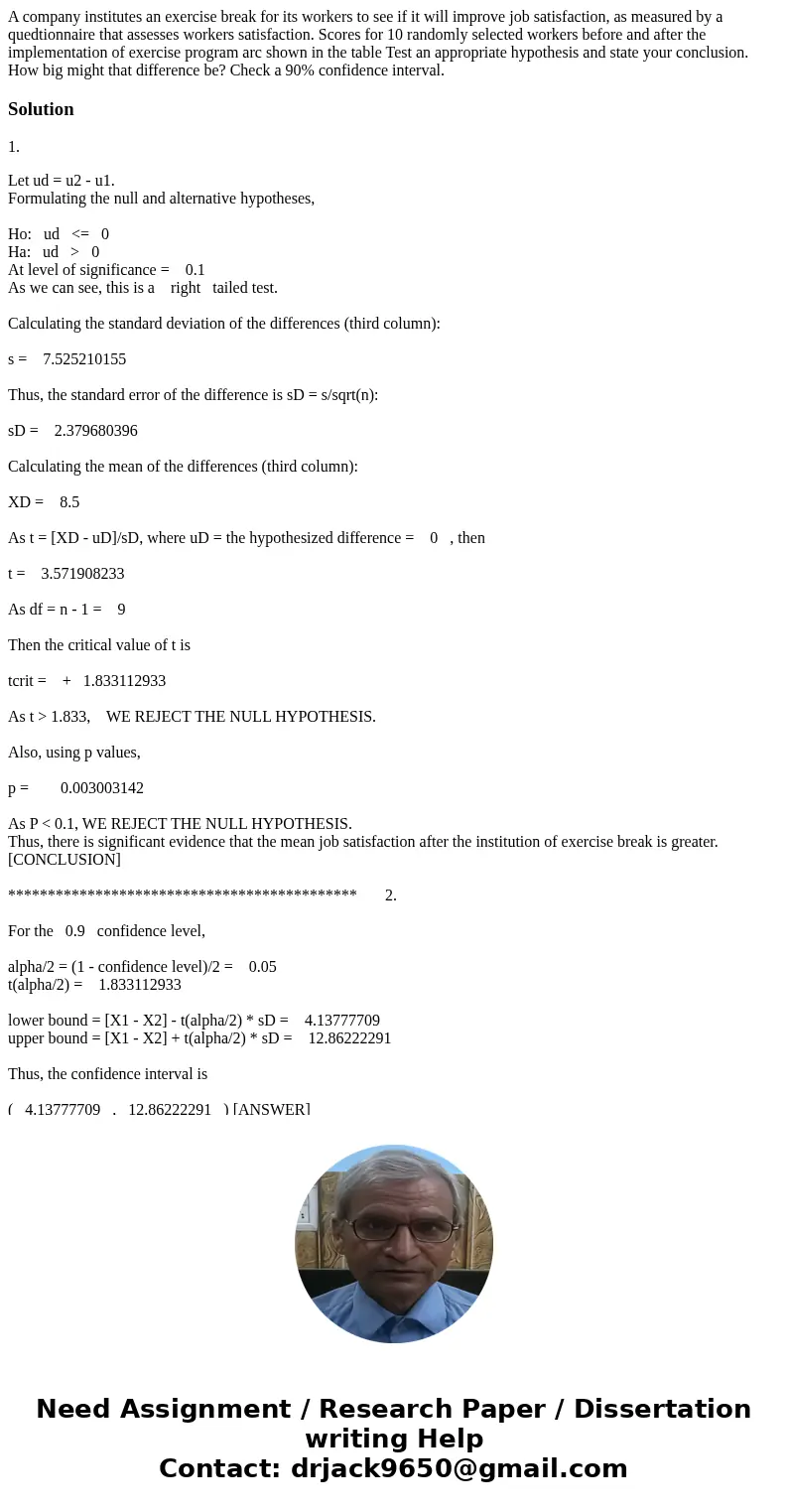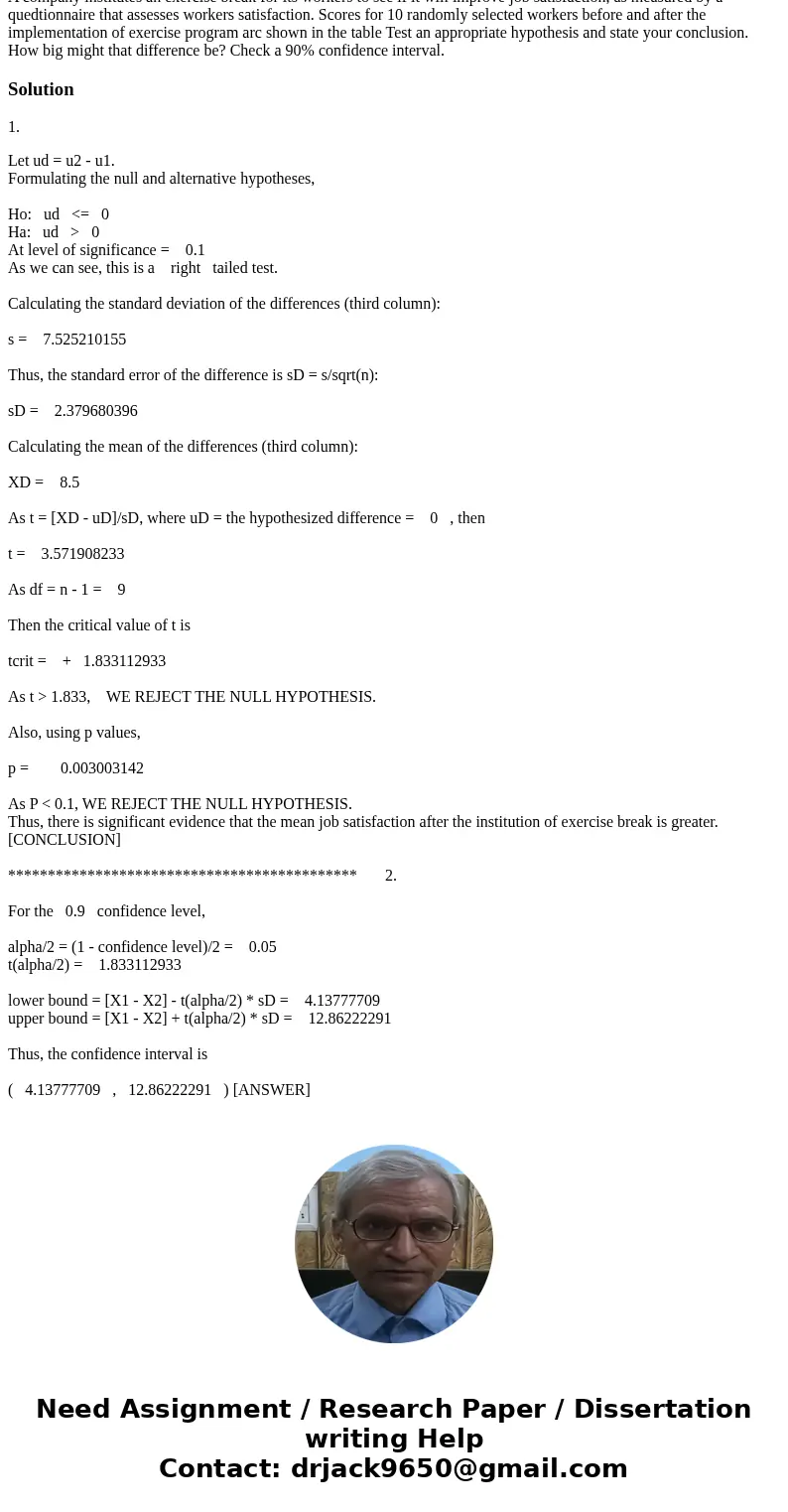A company institutes an exercise break for its workers to se
Solution
1.
Let ud = u2 - u1.
Formulating the null and alternative hypotheses,
Ho: ud <= 0
Ha: ud > 0
At level of significance = 0.1
As we can see, this is a right tailed test.
Calculating the standard deviation of the differences (third column):
s = 7.525210155
Thus, the standard error of the difference is sD = s/sqrt(n):
sD = 2.379680396
Calculating the mean of the differences (third column):
XD = 8.5
As t = [XD - uD]/sD, where uD = the hypothesized difference = 0 , then
t = 3.571908233
As df = n - 1 = 9
Then the critical value of t is
tcrit = + 1.833112933
As t > 1.833, WE REJECT THE NULL HYPOTHESIS.
Also, using p values,
p = 0.003003142
As P < 0.1, WE REJECT THE NULL HYPOTHESIS.
Thus, there is significant evidence that the mean job satisfaction after the institution of exercise break is greater. [CONCLUSION]
******************************************** 2.
For the 0.9 confidence level,
alpha/2 = (1 - confidence level)/2 = 0.05
t(alpha/2) = 1.833112933
lower bound = [X1 - X2] - t(alpha/2) * sD = 4.13777709
upper bound = [X1 - X2] + t(alpha/2) * sD = 12.86222291
Thus, the confidence interval is
( 4.13777709 , 12.86222291 ) [ANSWER]


 Homework Sourse
Homework Sourse